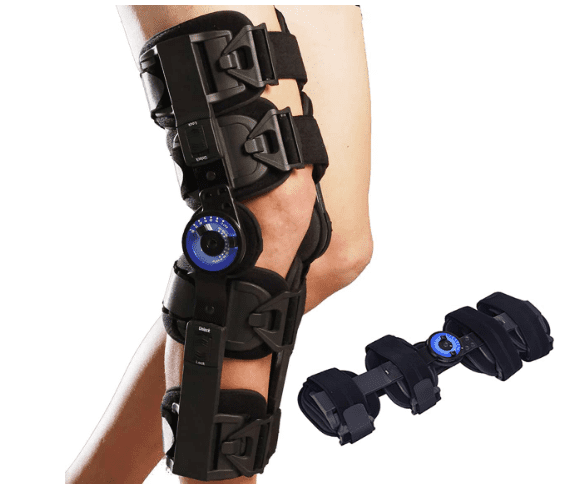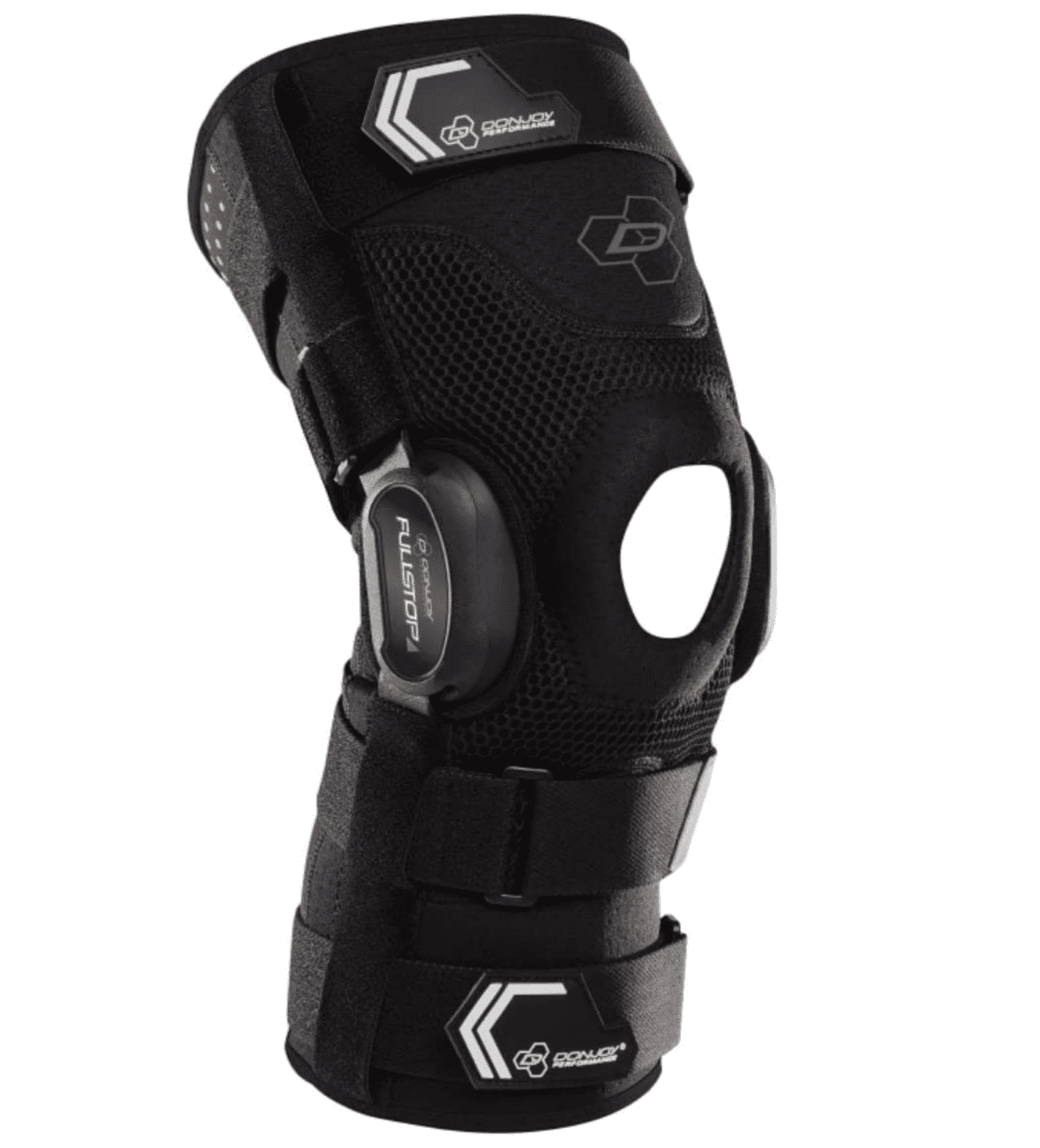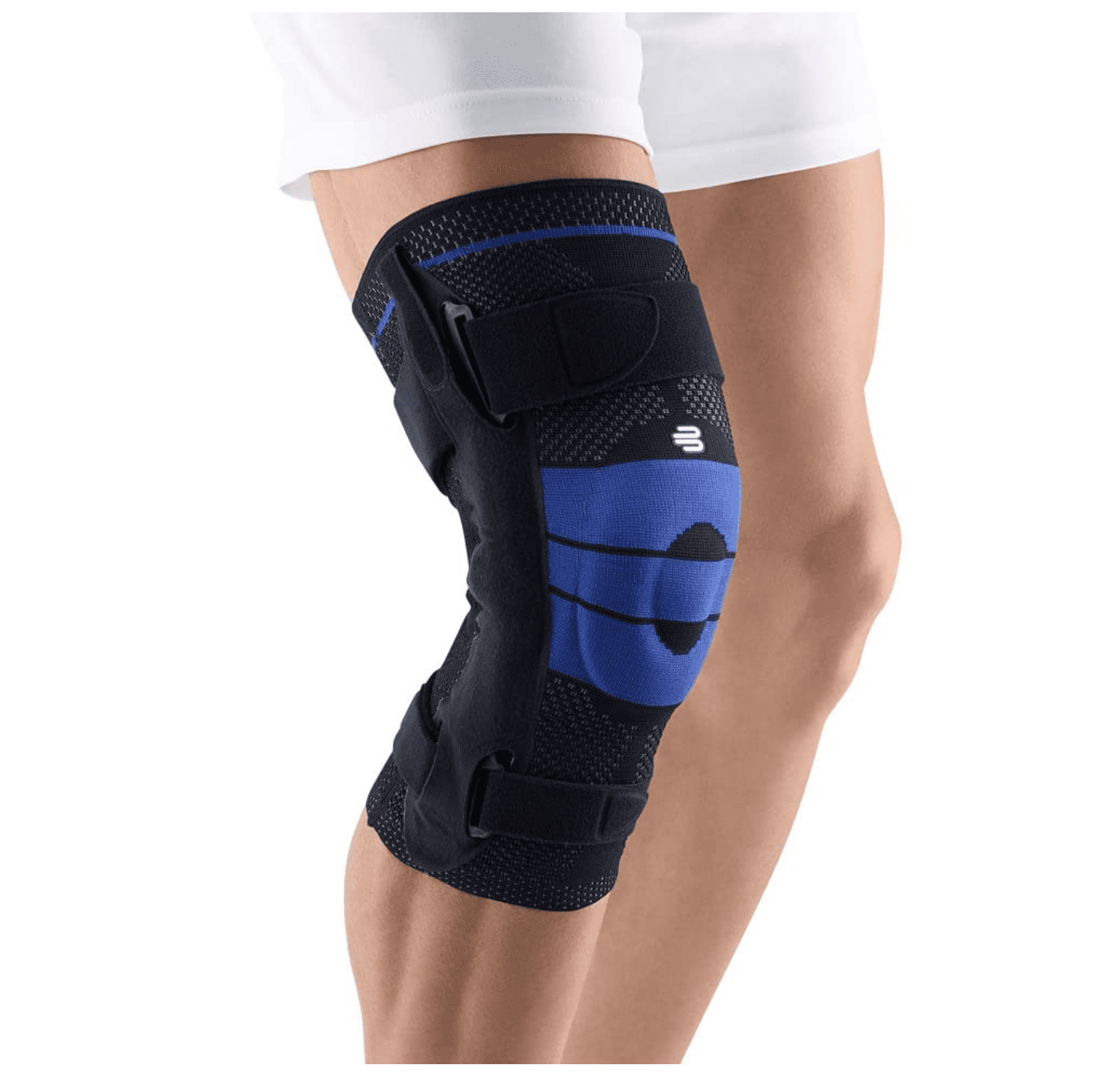ACL Injuries in Sport
Read More >
The Anterior Cruciate Ligament (ACL) is one of the knee’s most important stabilising ligaments. It plays a crucial role in controlling forward movement of the tibia (shin bone) relative to the femur (thigh bone) and helps manage rotational forces within the knee joint. When the ACL is injured, recovering, or surgically repaired, proper support is essential to prevent instability and aid rehabilitation.
ACL knee braces and supportive knee sleeves can provide varying levels of stability, depending on the severity of the injury. Some ACL braces offer proprioceptive feedback (enhancing movement awareness) with minimal support, while others are hinged, highly structured, and designed for total ACL ruptures or post-surgical recovery.
For those returning to high-impact sports such as football, skiing, or basketball—where the ACL is placed under significant strain—wearing an ACL brace can reduce the risk of re-injury and provide additional confidence during movement.
With years of experience treating ACL injuries and prescribing knee braces, we have carefully curated a list of the best ACL knee braces to help you find the right support for your recovery and performance needs.
James McCormack is a Physical Therapist specialising in knee, foot & ankle injuries. www.james-mccormack.com participates in the Amazon Services LLC Associates Program, an affiliate advertising program designed to provide a means for sites to earn advertising fees by advertising and linking to Amazon.com. The money earned from this helps us create free educational content without affecting the price of the ACL Knee braces we recommend.

ACL knee surgery involves replacing the torn ligament with a graft, typically taken from the hamstring tendon or patellar tendon. This graft requires significant healing time and remains vulnerable to excessive strain during the early stages of rehabilitation. Proper support is crucial to protect the knee and ensure a successful recovery.
We recommend the Orthomen Hinged ACL Knee Brace, designed to provide maximum stability and protection during the initial post-surgery phase. This brace helps minimise stress on the ACL graft, reducing the risk of re-injury while the surrounding muscles regain strength and control.
✔️ Strong Hinged Support: Limits excessive knee movement to protect the ACL graft.
✔️ Adjustable Fit: Ensures comfort and stability during daily activities.
✔️ Ideal for Early Recovery: Provides essential support when the knee is weak and poorly controlled.
For those recovering from ACL reconstruction surgery, this brace is an excellent choice to enhance stability, reduce strain, and support a smoother rehabilitation process.
When returning to sports after an ACL injury, a knee brace can provide essential stability while also boosting confidence during movement. ACL injuries can increase the risk of re-injury, making it important to have proper support while regaining strength and control.
We recommend the DonJoy ACL Knee Brace, designed for high-performance sports and offering four-way stability to protect the knee from excessive movement.
✔️ Multi-Directional Support: Limits forward movement of the tibia, reduces rotation, and prevents hyperextension.
✔️ Quick & Secure Fit: Easy to apply and adjust for maximum stability without restricting movement.
✔️ Comfortable & Flexible: Designed for athletic performance, allowing free movement while keeping the knee secure.
This brace is also an excellent choice for wrestling, as it can be worn with a cover sleeve to prevent it from catching on clothing or mats. Whether you’re playing football, basketball, or engaging in high-impact sports, the DonJoy ACL brace provides the protection and confidence needed to return to action safely.


Wearing an ACL knee brace is optional in most cases and depends on the stage of recovery and the activities you engage in. After ACL surgery, a brace may be recommended, but it is not always required.
An ACL brace can provide additional support, reduce strain, and enhance proprioception (awareness of knee positioning). However, a brace cannot prevent all injuries, and long-term reliance on one may weaken the muscles that naturally support the knee.
If you’re considering wearing a brace, it should be used for the right activities and for an appropriate duration. Overuse can lead to muscle weakness and reduced confidence in your knee’s natural ability to stabilise itself. Working with a qualified physical therapist can help ensure you strengthen the muscles around your knee and regain stability without excessive reliance on a brace.
Most surgeons recommend wearing a locked ACL brace for up to 6 weeks post-surgery, with the first 2 weeks typically requiring full-time use, including while sleeping. However, this varies based on the severity of the injury and surgical procedure.
If you’re unsure, consult your orthopedic surgeon or physical therapist to determine the best brace-wearing schedule for your recovery.
This is not medical advice. We recommend a consultation with a medical professional such as James McCormack before purchasing any ACL Knee Braces. James offers Online Physiotherapy Appointments weekly.